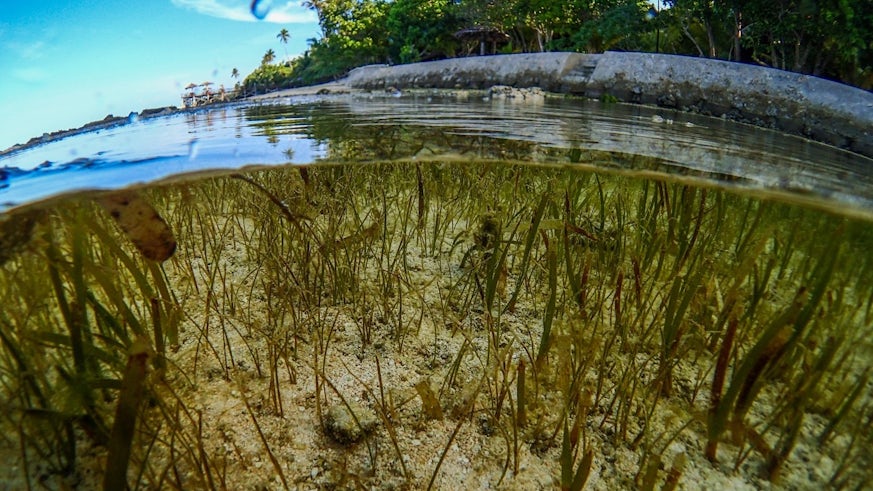Can citizen scientists locate the world’s seagrass?
24 November 2017

Citizen scientists have the potential to secure a future for seagrass meadows by collecting new data about the meadows globally, according to the lead author of a new study and a scientific adviser for BBC’s Blue Planet II.
Led by Cardiff University’s Sustainable Places Research Institute along with Swansea University and James Cook University in Australia, the study suggests that citizen scientists may be key to helping answer global questions about seagrass meadows, their location, health, reproductive status and associated fauna.
A key marine habitat, seagrass meadows provide food and shelter for a diverse range of invertebrates, fish, mammals and birds. They are crucially important for commercial, recreational and subsistence fishing.
To date, around 600, 000 km² of seagrass has been mapped globally, but estimates suggest seagrass meadows may reach some 4 million km², meaning there are vast information gaps.
Benjamin Jones, of Cardiff University’s Sustainable Places Research Institute, who was a scientific adviser on the forthcoming episode of Blue Planet II ‘Green Seas’ (26 November 2018) said: “Seagrass meadows support a rich array of marine life, including charismatic and endangered species like seahorse, turtle and dugong. They also provide one of the planet’s most effective stores of carbon, locking it away up to 35 times more effectively than the same area of rainforest. Sustaining this store may be key to mitigating the worst impacts of climate change. If we are to protect this key marine habitat, supporting biodiversity, fisheries productivity and protecting carbon stores, we need to know exactly where it is.”
Dr Leanne Cullen-Unsworth, a co-author also based at Sustainable Places Research Institute, added: “To plug this significant global information gap a new approach is needed. This approach should enable partnerships and encourage data sharing between governments, private enterprises, conservation NGO’s and the general public. Our study suggests that this can be achieved through user-friendly tools and resources that can draw on a global community of citizen scientists to help understand these amazing habitats.”
One citizen science platform that has had considerable success already is SeagrassSpotter. Created by scientists at Cardiff University, Swansea University and the marine conservation charity Project Seagrass, it engages and supports budding seagrass citizen scientists in the style of Pokémon-Go.

Officially launched in 2015, it has recorded 750 observations by 360 users from 94 locations throughout the North Atlantic, Mediterranean and Caribbean regions. This includes one sighting of a seagrass meadow in Wales that was last recorded in 1891. Over the coming months SeagrassSpotter will be expanded to include more regions of the world. SeagrassSpotter is also one of the citizen scientist projects featured on the BBC’s Blue Planet II website to encourage people to get involved in helping protect the world’s oceans.
Ben added: “We believe that whilst governments should have a statutory responsibility to monitor, map and understand our important seagrass resources it’s unrealistic to expect this to be complete. If recent viewing figures for Blue Planet II are anything to go by, members of the public are becoming more interested in the marine environment. Our research shows that securing a future for seagrass could well lie in the hands of local people literally acting as citizen scientists.
“People around the world can start helping us now, by adding seagrass sightings online via the SeagrassSpotter website, or by downloading the app and submitting sightings in the field.”
The paper, Crowdsourcing conservation: The role of citizen science in securing a future for seagrass, is published in the journal Marine Pollution Bulletin.
Share this story
For more information please visit the Research Institute webpages



